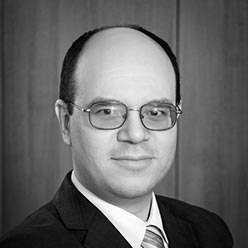2021 marked the 50th anniversary of the world’s first index fund launched by Wells Fargo Bank.
Today, ETFs are becoming the most popular form of index funds. Unlike units of traditional index funds, ETF shares can be bought and sold in the secondary market (see the Box). According to the news and research agency Morningstar, ETFs account for at least a fourth of the overall assets of all unit investment funds globally, or approximately $9 trillion, which is comparable with the combined assets of all private equity and hedge funds.
ETFs are gradually supplanting all other types of collective investment funds. This is an advantage for investors as their market access costs decrease. However, this also presents a concern for analysts since few can predict the implications of the ETFs’ future dominance (this issue is considered in detail in my article (link in Russian) published in the journal Voprosy Ekonomiki, No. 11, 2021).
Passive revolution
Index funds have become a familiar element of the financial market landscape by now, but a few decades ago they had to prove their viability to investors. Financial innovations were promoted by pioneers who followed their intuition. In the late 1960s, John McQuown headed a team of specialists at Wells Fargo who were in charge of introducing computer servers for financial calculations. Credit scores and index funds were among the innovations that the Management Sciences division presented to the financial world. At one point Wells Fargo had six future Nobel laureates in economics on its payroll.
The first index fund was created in 1971 when Wells Fargo started to service the Samsonite pension fund with assets totalling $6 million. In 1973, Wells Fargo set up a new closed-end fund that tracked the S&P 500 index and replicated its composition. Soon, Wells Fargo’s example was followed by the American National Bank of Chicago and Batterymarch, which launched their first index funds tracking the S&P 500 index for institutional investors.
In 1975, John Bogle (link in Russian) founded the Vanguard Group. Bogle named the asset management company after Admiral Nelson’s flagship in the Battle of Aboukir Bay. Just a year later, the company established the First Index Investment Trust (today known as Vanguard 500), which was the world’s first index fund accessible to retail investors. Bogle was inspired by the ideas of Paul Samuelson, a Nobel laureate in economics, and Burton Malkiel, a professor of economics at Princeton University, who is considered to be the ‘father of passive investing’. In his article, Samuelson proposed launching a pilot project – a diversified no-fee fund accessible to retail investors, rather than only to pension funds and insurers. As for Malkiel, his book A Random Walk Down Wall Street explored the benefits of such funds for retail investors. Random walk is a mathematical model that describes a sequence of random steps. According to Malkiel’s hypothesis, this model describes the stock market since stock price movements are random and unpredictable, which is why it is generally more profitable for investors to follow the market than to try to outperform it.
However, the first offering of the Vanguard Group index fund was no success as investors were unable to understand the product, calling it Bogle’s folly, and the amount collected by the fund was as low as 5% of the target.
Although his first attempt failed, Bogle started to promote index funds publicly. In 1999, the Fortune magazine named Bogle ‘one of the four investment giants of the 20th century’. Headed by Bogle, Vanguard became the largest asset management company in the world. Over the period from 1975 to 2021, it increased the assets under its management from $11 million to $7.2 trillion, and the number of its funds went up from 1 to 441. This success can be explained by sustainable returns. For instance, from the moment of its opening in 1970, the company’s oldest operating fund Wellesley Income has focused on investment-grade shares and bonds, earning 9.7% per annum on average.
Moreover, corporate governance has played an essential role as well. Vanguard is owned by its own 400 funds, which means that it is owned by its investors. Thanks to such structure, costs are kept at a minimum and the weighted average management fee is only 0.09% of the assets per year (for reference: the weighted average fee on assets in the US is 0.19%, and the weighted average fee of ETFs / exchange-traded UIFs in Russia was 0.86% as of November 2021).
First ETFs
The first financial instruments that can be considered ETF prototypes were securities issued by the American Stock Exchange and the Philadelphia Stock Exchange. They tracked stock indexes, and it was no longer necessary to purchase individual shares in order to have returns proportionate to the indexes’ movements. Classical ETFs were born out of professional intuition. The idea was suggested by Nate Most, who headed the new product development unit at the American Stock Exchange. The stock market crash on Black Monday (19 October 1987) made him rethink the nature of index funds: the trading chaos could have been less dramatic if investors had been trading securities baskets instead of individual equity shares. Thus, Most conceived the idea of organising exchange trading of index funds, which had not been traded in the secondary market before.
Under this innovative format, brokers, or ‘authorised persons’, were to trade electronic receipts for a certain unchanging stock basket. As a matter of fact, Bogle did not like (link in Russian) the idea when Most presented it to him. ‘You want people to be able to trade the S&P but I just want them to buy and never sell it,’ said Bogle.
In 1993, the first modern ETF was launched on the American Stock Exchange, tracking the Standard & Poor’s 500 Index (SPDR S&P 500 Trust, or SPDR, usually pronounced as ‘spider’). This ETF was managed by State Street Global Advisors in cooperation with Most. As of 2021, State Street was one of the largest asset management companies, with assets totalling $3.9 trillion.
From the simple to the complex
In the 2000s, ETFs evolved into a much more complex type of financial products. Their development involved more assets in the portfolios, as well as updates to how ETF returns are calculated and how ETFs follow the performance of the underlying indexes. The most widespread ETFs are those with portfolios comprising equity shares, debt securities and commodities, baskets of mixed assets, and alternative instruments (foreign currencies, real estate, money market instruments, volatility derivatives, etc.). The most important innovations are inverse ETFs betting on decline of asset values and leveraged ETFs aiming to generate returns that are multiples of the performance of the underlying index, as well as actively managed ETFs.
In 2006, the investment company ProShares launched the first inverse and leveraged ETFs on the US market. Even more importantly, asset managers started to offer ETFs whose returns differed from the performance of benchmark indices.
In other words, ETFs started to go beyond traditional passive investing. In 2007, the investment bank Bear Stearns founded the first short-duration actively managed ETF, but due to the global financial crisis and Bear Stearns’ bankruptcy, this product failed to take off. In 2016, after long negotiations with the US Securities and Exchange Commission, the investment company Eaton Vance presented the first actively managed exchange-traded fund (ETMF) on Nasdaq. It combines the features of active portfolio management and an ETF.
Unlike a traditional ETF, an active fund’s portfolio does not perfectly mirror the composition of the underlying index and can deviate from the diversification rule, i.e. the manager or the team may choose assets to invest in that are not included in the underlying index. Thus, the line between traditional unit investment funds and exchange-traded funds is becoming blurred.
Dominant investors
ETFs have fundamentally transformed the financial market, altering it even more considerably than their predecessors, traditional index funds. They can be used as ‘Lego blocks’ for strategic portfolios or tactical solutions by anyone, from complex hedge funds to individual investors. The global financial market elite also prefers to invest in ready-made portfolio solutions rather than in individual securities. For instance, it is reported that President of the European Central Bank Christine Lagarde holds her savings in two ETFs investing in a basket of European companies’ dividend-paying stock and mixed assets, while former President of the German Bundesbank Jens Weidmann invests in ETFs tracking the global index MSCI World and the German stock index DAX.
Some time ago, many asset management companies hoped that high demand for passive investment strategies would bring them new competitive advantages, and active investing would help them outperform ETFs. However, that turned out to be different. In 2018, one of the world’s leading investors Warren Buffett won $2.3 million on a bet that over a 10-year period the S&P 500 index would outperform the five hedge funds selected by the asset management company Protégé Partners: on average, the returns of the index fund tracking S&P 500 was 8.5% per annum against the 3% per annum demonstrated by the hedge funds. Empirical data proves that, on average, passive investment in indices outperforms active management by 0.75% per annum.
Apparently, the situation will remain the same until index funds become dominant investors in the collective investment market. Their dominance is probably just around the corner. As of 2021, the global ETF market totalled approximately $9 trillion. The market leaders are BlackRock, State Street, and Vanguard. Asset managers expect the global ETF market to expand to $15 trillion by 2025. The growth is driven by leveraged ETFs (based on debt securities and loans) and model portfolio ETFs, and the demand is spurred by investment consultants’ recommendations as well as the appeal of environmental, social and governance (ESG) standards.
‘The Problem of Twelve’
The growth of index funds has exceeded all expectations. Specialists from Harvard Law School and Boston University assessed that the funds managed by the Big Three – BlackRock, State Street, and Vanguard – accounted for a fourth of the shares voted at S&P 500 companies in 2019. They also estimate that the share of votes that the Big Three would cast at S&P 500 companies could well reach 40% in two decades. In his article ‘The Future of Corporate Governance’, John Coates (Harvard Law School) suggested that, owing to passive investing, in the near future roughly twelve individuals would have practical power over the majority of US corporations. ‘Unless law changes, the effect of indexation will be to turn the concept of ‘passive’ investing on its head and produce the greatest concentration of economic control in our lifetimes,’ the professor apprehends. There are critics believing that passive investing is ‘worse than Marxism’, implying that communists at least try to allocate resources efficiently, whereas index funds just blindly invest capital according to the composition of the underlying index.
In the United States, the birthplace of index funds, there are heated discussions (link in Russian) about why and how funds can or should use their globally growing market power. Some believe that index funds are ‘lazy’ shareholders, which leads to irresponsible management and deprives the economy of dynamism. Others are concerned that index funds might become excessively active and intervene in contentious issues of business models or even government policies.
But one thing is absolutely clear: index funds’ policies are transforming from a local into a global problem, and it needs to be addressed based on a public consensus. A possible response is the expansion of ESG standards, which index funds might commit to voluntarily. Possible restrictions are also being discussed in the US. Specifically, they might involve asset allocation across several independent asset management companies, making supervisory boards more independent, limitations on voting rights at shareholders’ meetings, etc.
ETFs and financial stability
The exponential growth of investment in ETFs inspires the research of ETFs’ effects on financial markets. However, economic literature studying the impact of ETFs on the market is just beginning to develop. Generally, academic papers cover several potential effects, including the liquidity of the underlying assets in ETFs’ portfolios, equilibrium price discovery by the market, volatility, and co-movements of prices for underlying assets.
Most researchers agree that ETFs improve the liquidity of the shares in their portfolios, provided that the market environment remains normal. During financial stress periods, ETFs’ liquidity worsens, affecting the liquidity of the underlying assets. As regards the discovery of the equilibrium prices for the underlying assets by the market, ETFs might both increase and decrease the market performance. The securities in ETFs’ portfolios reflect fundamental information more accurately and quickly. However, they are significantly impacted by intraday technical trading. After an equity share is included in a stock index and, accordingly, in an ETF’s portfolio, the correlation of the price for such a share with the prices for other shares in the index becomes stronger. Thus, equity shares included in ETFs’ portfolios are more exposed to common shocks and herding behaviour among the investors during financial stress periods.
In August 2021, the International Organization of Securities Commissions (IOSCO) released a report addressing the behaviour of the ETF market during the market turmoil induced by anti-pandemic restrictions. IOSCO reviewed the situation in the primary and secondary markets of ETFs in spring 2020, specifically the pricing differences between some bond ETFs and their net asset values. Differences were mostly found in the cases of some derivatives-based ETFs. Overall, international experts’ analysis did not reveal any major risks or fragilities in the ETF structure, although some ETFs did experience unusual trading behaviours temporarily. Furthermore, IOSCO made the decision to consider future enhancements of ETF regulation.
The continuous worldwide growth of passive investments and ETFs in particular synchronises asset price movements. In the future, this might erode the benefits of international diversification. No matter how diversified the ETFs bought by an investor are, prices for ETF shares will be highly correlated, especially during the periods of the financial turmoil.
For now, academic papers only draw generalised conclusions. Researchers do not address the ETFs of individual major asset management companies or ETF portfolios based on bonds, commodities, and money market instruments, as well as leveraged ETFs. Despite the enormous size of the global market, ETFs are still underexplored, which promises broad opportunities for future research.







